PDF Download: Alaska Gold Catcher LLC Manual
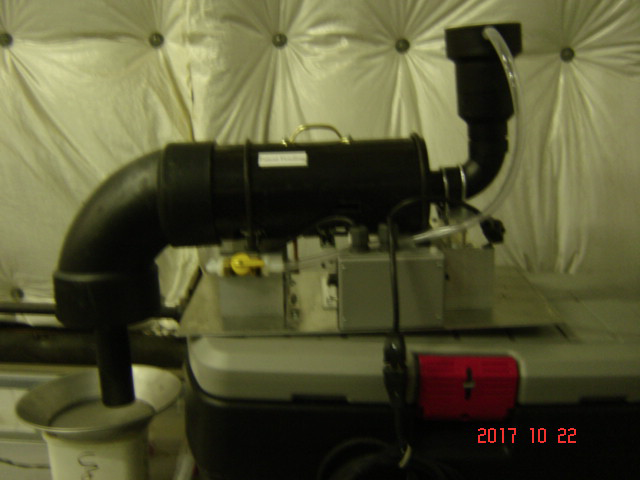
ALASKA GOLD CATCHER LLC
Welcome to Alaska Gold Catcher. This recovery system is designed to recover gold from black sand as small as a pin point. You can watch the process while working so that you can see that the gold is not floating over the edges of the pie pan. To stop this, all it takes is a few drops of dish washing soap in the recirculating water.
This recovery system is based on the centrifuge system. Just water. No chemicals or acids. The system itself is simple to operate and recovers gold that can hardly be seen by the naked eye from black sand. The system can be used in the field as long as the material is classified to 20 mill or smaller. The finer the classified material the better. You will be able to rerun material as you do not lose the material in this process. While processing material you will see the material in the upper container that holds all material being processed. You will be able to run the gold catcher in the field because the water is recirculated. It will take about less than ten gallons of water to run this unit all day.
Gold Catcher can be used in the desert, creekside, or on your patio. This unit can be used in exploration as long as the material is screened as above, before pouring the material into spout located on top of unit. The unit uses a 12 volt battery or can be run by a 12 volt battery charger.
You will need:
- 1 five gallon bucket
- 1 – 4 inch block to elevate bucket
- 1 gallon bucket for catching material
- 2 gold pans preferred (metal)
- 1 suction bottle
- 1 generator AC 115 volts
- 1 12 volt battery charger
- 1 12 volt car battery
- 1 extension cord
- 1 revolution per minute tachometer reader ( RPM )
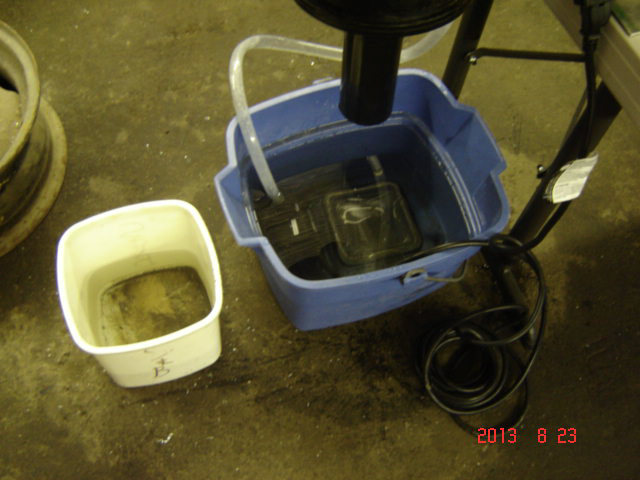
Place large bucket with block water pump and hose as shown.
Put small bucket on top of block.

Put water pump cord to outlet on plant.
Pump on/off switch below speed control on side of panel.
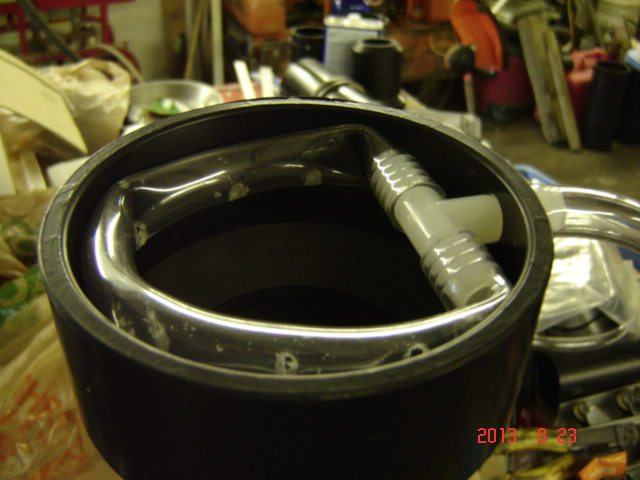
FEED SHOOT
Install feed shoot at top end of centrifuge.
Connect small tube on side of outlet tube to water on/off valve.
Make sure Speed switch is off when plugged into extension cord.
Plug in power extension cord to male plug on plant.
Fill large bucket with water. Turn switch on for pump, and fill small bucket.
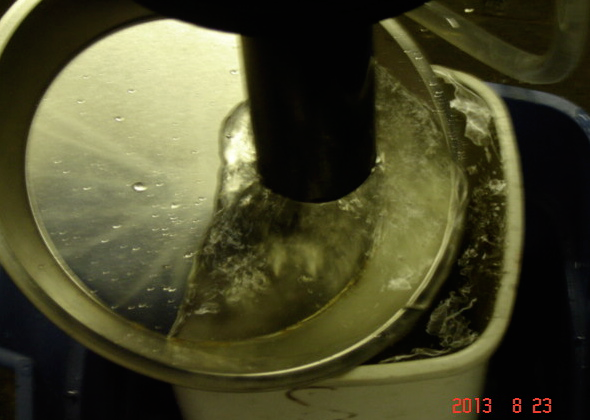
Place gold pan on edge of small bucket as shown.
RPM reader below.
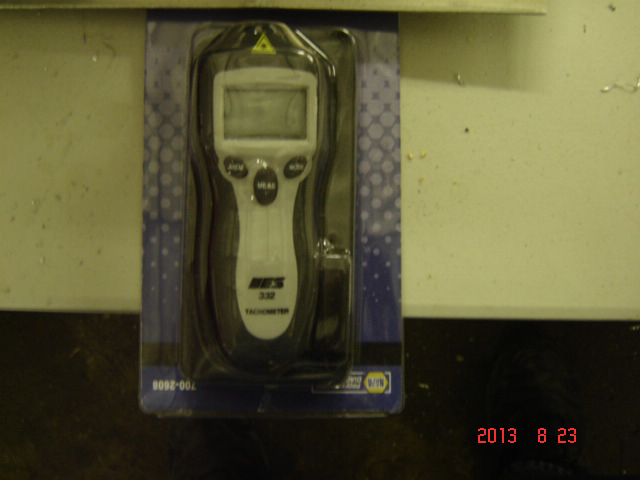
There is a slot on the side of the centrifuge housing. Point RPM reader at slot while holding the center switch down as seen above. Reading should show RPM of centrifuge.
Turn Speed control clockwise until rate is 300 RPM. Feed material into spray feeder. Check RPM after some material has been fed into plant. Feed material slowly at start and watch gold pan to see when black sand is showing in pan. When gold appears increase RPM up slightly.
Continue to feed more material. At first trial, feed about one cup of material into feeder. Let run for few minutes. Change pans and watch to see if black sand is still coming out. If not, slow down the RPM. Run at same RPM and watch pan. Change pans several times until black sand has stopped coming out of the plant. At this point, change pans and slow plant RPM. Gold will continue to show up with very small amounts of black sand.
Rerun material in small bucket if needed. This assures that all material is caught and not lost in the small bucket.
CENTRIFUGE OPERATION
Ores differ from place to place in regards to contaminants, ect. And so the amount of water required to achieve a good wash with your screens depending on the characteristics of the ore. There is no standard recommendation for water consumption of the Centrifuge primary concentrator, but rather a range of water consumption that the centrifuge will operate in without affecting recovery . As a general rule, it is recommended to use only the amount of water required to achieve a good wash but no more. In other words, less water is better.
As in all mining processing, a consistent and uniform feed is important to achieving good recovery. An occasional surge of material does not present a great problem however, finding the balance and tuning your wash, classify and concentration circuit depends on a consistent feed, a proper feed ratio and staying within each component’s capacity.
There is no minimum volume of water required to operate the centrifuge other than what is required to make the concentrate wet enough to carry the screened material by natural gravity into the plant. Excessive water can create loss anywhere along the process circuit, particularly with fine gold particles. Therefore, it is critical that the entire wash, classify and primary concentration circuit operate within the recommended feed and water capacity.
Turn on water and adjust water flow.
NOTE: TURNING ON WATER AFTER THE CENTRIFUGE is up to speed is
an important habit: as any residual concentrate or gold inside the centrifuge from the previous day’s processing will otherwise be washed out and lost.
Start feeding concentrate to your wash plant. Once you have balanced the feed rate, re-check the RPM and adjust to 300.
During production, you may see only an occasional fine gold particle discharge out the back of the centrifuge which is normal, keeping in mind your recovery will be high 90% range, as much as 99% of all visible gold particles. If you establish that you are loosing a higher than normal percent of gold particles then something is out of balance. In most cases, it is due to excessive water.
The yellow valve that has no plastic hose can be used as a clean up with hose long enough to be put into feed shut turned on all the way to wash out the centrifuge. RPM on centrifuge very slow. Run for at least five minutes.
